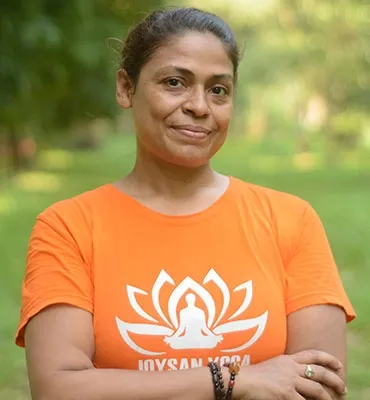-
Invalid quantity more than stock{{cart_item.name}}{{cart_item.variation_attribute_name}}: {{cart_item.variation_attribute_label}}{{cart_item.item_unit}}: {{ setCurrency(cart_item.price)}}{{ setCurrency(cart_item.price*cart_item.quantity)}}
Yoga Tips
Foundational Principles for Beginners
1. Listen to your body & go slow
Never push into discomfort or pain—move gently, breathing naturally, and allow your range and strength to evolve gradually. Beginners should modify poses if needed and skip what's too strenuous until ready.
2. Consistency over duration
Short daily sessions (15–20 minutes) are more effective than sporadic, longer ones. Even a few minutes of breathwork (like box breathing or alternate nostril) can sharpen clarity and promote calm.
3. Focus on breathing
Make breath awareness your anchor—inhale to expand, exhale to fold. Coordinating breath and movement enhances alignment and tunes your mind-body connection. Try pranayama techniques like Ujjayi or Nadi Shodhana.
4. Use props wisely
Blocks, straps, blankets, or even household alternatives can support alignment, reduce strain, and help you explore underchallenging or overstretching poses. Especially helpful for Restorative and Yin styles.
5. Warm up and cool down
Begin with gentle movements like Cat–Cow, and always finish with Savasana or restorative closing poses to help the body integrate and relax fully.
Essential Habits for Deepening Your Practice
6. Be present and mindful
Approach each pose with awareness—avoid autopilot routines by noticing subtle changes in your body, breath, and mental state. Mindful engagement enhances both physical and emotional benefits.
7. Set intentions & reflect
Before each session, set a simple intention (e.g. patience, balance). After practice, pause for gratitude or reflection. These habits deepen immersion and self-awareness.
8. Choose a qualified teacher when possible
Attending beginner-friendly classes ensures proper guidance, alignment cues, and modifications as per your needs. Good instructors respect individual differences and boundaries.
9. Minimize distractions
Turn off devices, clear the space, and approach your practice with full presence. It builds focus and supports safety during movements.
10. Stay patient and non‑competitive
Yoga isn't about comparing bodies or poses. Accept your current state, progress at your pace, and enjoy the process without judgment.
Quick Reference Table
| Tip | Why It Matters |
|---|---|
| Listen & modify | Prevents strain, supports longevity |
| Short, consistent sessions | Builds habits and improves over time |
| Breath-coordinated movement | Enhances energy flow and focus |
| Use props if needed | Safe alignment and deeper access |
| Warm-up and cool-down | Protects joints and aids recovery |
| Stay mindful & intentional | Deepens physical and mental awareness |
| Choose a skilled teacher | Ensures accuracy, safety, personalized guidance |
| Practice distraction-free | Enhances concentration and effectiveness |
| Start with acceptance | Builds confidence and sustainable growth |
Quick-Yoga Routine Tips
-
Post-meal digestion support (15–30 mins after eating): Vajrasana (Thunderbolt), Supta Baddha Konasana, Seated Cat–Cow, Gomukhasana, Supta Matsyendrasana—these poses stimulate digestion, relieve bloating, and activate the parasympathetic ("rest and digest") nervous system.
-
Restore & unwind with Viparita Karani (Legs-Up-the-Wall): Practiced 5–20 minutes, this gentle inversion enhances lymphatic drainage, cortisol reduction, vagal tone, and relaxation. It’s ideal before sleep or after a long day.
-
Begin with foundational poses: Tadasana (Mountain), Tree, Cobra, Child’s, Bridge, Easy Pose, Downward Facing Dog. These support posture, balance, spine health, and full-body rejuvenation.



 Health Concerns
Health Concerns








